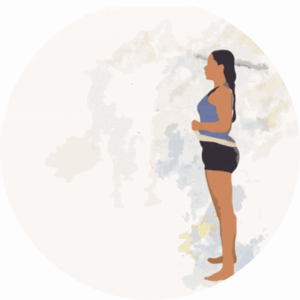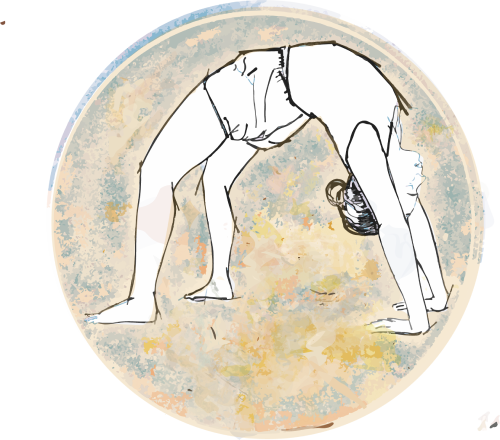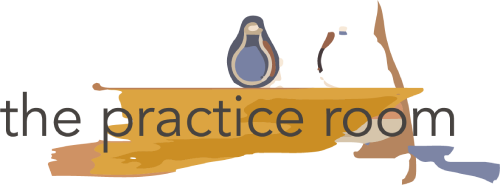FAQs about Our Admission process,
Class times
Class levels
Can i just drop into a class?
Unfortunately, no. All our classes are based on monthly or quarterly enrolment. This lets the teacher decide on a curriculum, and sequence classes so that each class builds upon the previous one. Beginners, or those who have practiced yoga in other traditions, will be confused even if they are physically able to ‘do’ an Asana. This is also distracting for the rest of the class
Exceptions are made for those who are regular students of Iyengar Yoga in other cities/ with other teachers – after prior discussion with the teacher.
Can i come for a trial class?
We do not do trial classes for the same reasons that we do not do drop-in classes (see the question/ answer above). However, you can do the next best thing: come in to observe the classes after discussing with the teacher, speak with our current students, and ask us any questions that you have.
Can i join yoga at the practice room at any time?
Our admissions open up every few months – usually in December and May. Having a fixed admission schedule enables us to make a coherent beginning for the entire batch – just like it does in any school or college. It gives structure to the program, avoids confusion in the minds of the new entrant, and brings everyone on the same page – whether they are absolute beginners, or those who have practiced yoga in other traditions.
We usually have a waiting list. If you would like us to let you know when we admissions re-open, please write to us here
I have done yoga earlier. Why do I need to go through the Introductory Module/ join the Beginner (FOUNDATION) level batch? Why cant I be admitted directly into a more advanced batch?
In theory all yoga is one. Practically speaking, the many ‘forms’ of yoga that are taught and practiced in our urban environments have very different objectives, methodologies and vocabulary, and end results. With the popularity of yoga, more and more people are coming in with prior experience of asana practice. We sometimes have aspiring teachers with many years of asana practice experience as students. We insist that all new students go through a basic familiarisation process – we call this the Introductory Program. The insistence on joining at the level of the Introductory Program is not a matter of ‘body ability’. It is to ensure that we are all on the same page: that the student understands the vocabulary that might be peculiar to our tradition, how to not just use, but to handle the basic props, and to get used to the pace and environment of an Iyengar yoga class. The Introductory Program is an 8 week program that is scheduled once every 3-4 months You will find the details of the next Introductory Program here.
If you don’t want to (or you don’t have the time) to do this in the in-studio format, we offer the option of doing this online through the Online Bridge Course for the Level Foundation at your own pace. You can go through the material faster if you have prior experience. Once you have a reasonable amount of familiarity with the online program, you can join the in-studio Level FOUNDATION at the beginning of almost any calendar month.
What do i have to do before registering for admission at the practice room?
You might have heard great things about us from your friend. But we strongly recommend that you do the following:
- Read through the entire FAQ section, and if you have any doubts about anything at all, speak with us.
- Come in and observe any one of our regular classes. If you have any queries or concerns, talk to us
- Pay the fees in advance.
Doing the above in order to ensure that you come into the practice room with a certain level of commitment and confidence. We have found that this goes a long way in ensuring a more rewarding learning experience for you, and teaching experience for us.
What are the class times and fees?
The Program offerings and the levels, along with the schedules and different fees, can be found here
How long is the yoga course?
“Yoga has a beginning. But no end.”
-Dr. Geeta Iyengar
These are ongoing classes. Like other traditional systems of learning, yoga involves lifelong learning.
Can I learn yoga and then do it by myself?
Although Mr. Iyengar himself was largely self-taught, practicing by oneself and progressing on the path of yoga without a teacher is not so easy. You will realise this yourself pretty soon after you start coming to class. Even if you are disciplined and motivated enough to start a self-practice, in order to consistently progress, to delve deeper into the subject, and to understand its finer intricacies, a teacher will probably be required for a very long time to come.
I am learning yoga at another place as well. But I want to experience Iyengar yoga.
Even though in theory all yoga is one, in practice, there are very different objectives, methodologies and vocabulary, and end results. Straddling across traditions will not bring any real benefit, and will only serve to confuse you. Yoga is not to be done for the sake of ‘experience’. Don’t waste your time looking at other forms of yoga if your current practice is taking care of your physical, intellectual, and spiritual evolution. If you feel something missing, discuss with your teachers.
I want to do more yoga – can I attend more than 2/3 classes in a week? Is 2/3 days in a week enough?
Our favorite answer to this question is a counter-question – “Enough for what?”
2/3 classes in a week is just enough for a beginner to start to learn the subject. Unlike many other traditions where the methodology is to repeat the same set of actions (a few rounds of surya namaskara, some fixed vinyasa routines) with minor modifications, each one of our classes is different. You will LEARN in each class. Too many classes do not give you the time to integrate, experiment and practice by yourself what has been taught in class. Eventually you are expected to start a more regular practice at home. Yoga is a personal practice, and progress will happen only through reflection, analysis and self-practice. The mode of learning in a class is very different from the mode of learning through self-practice.
So, 2/3 days in a week is enough to ‘learn’, but you can certainly do a lot more ‘practice’.


